Two more undescribed cricket species from Capertee Valley, NSW
1. Eurygryllodes species – Peeping Cricket
This pale cricket calls only at night, and mostly in March and April, which is autumn in Australia. I searched for them by torchlight, and used a flash to photograph them. So far I have only found males. Entomologist David Rentz (after examining some specimens I sent him) said this was an undescribed species in the genus Eurygryllodes. Its call is a distinctive single peep at 4.5 kHz, given every second or so. I call them the Peeping Cricket or the March Cricket.
HABITAT: night-time, open ground with sparse vegetation in dry woodland.
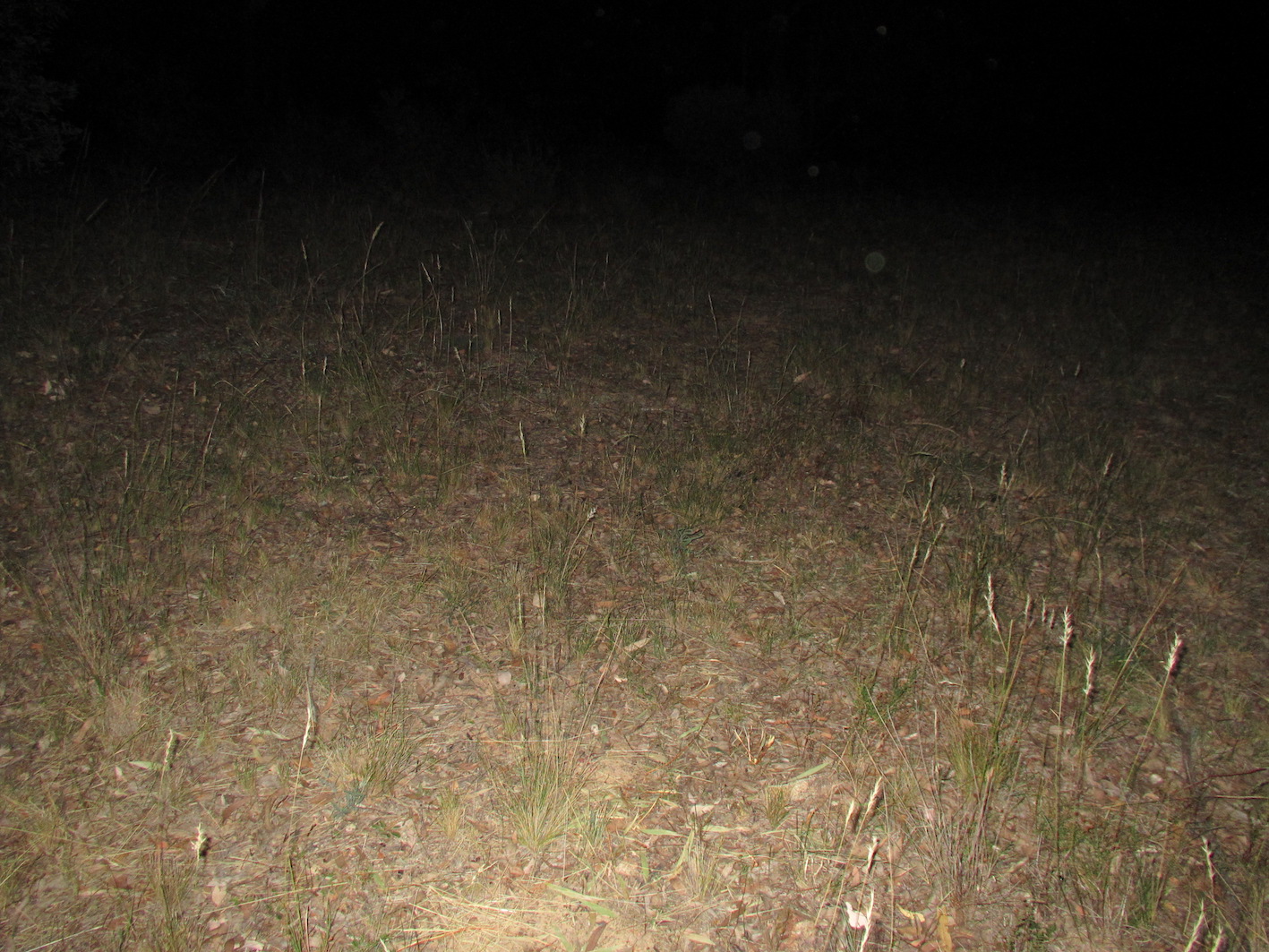
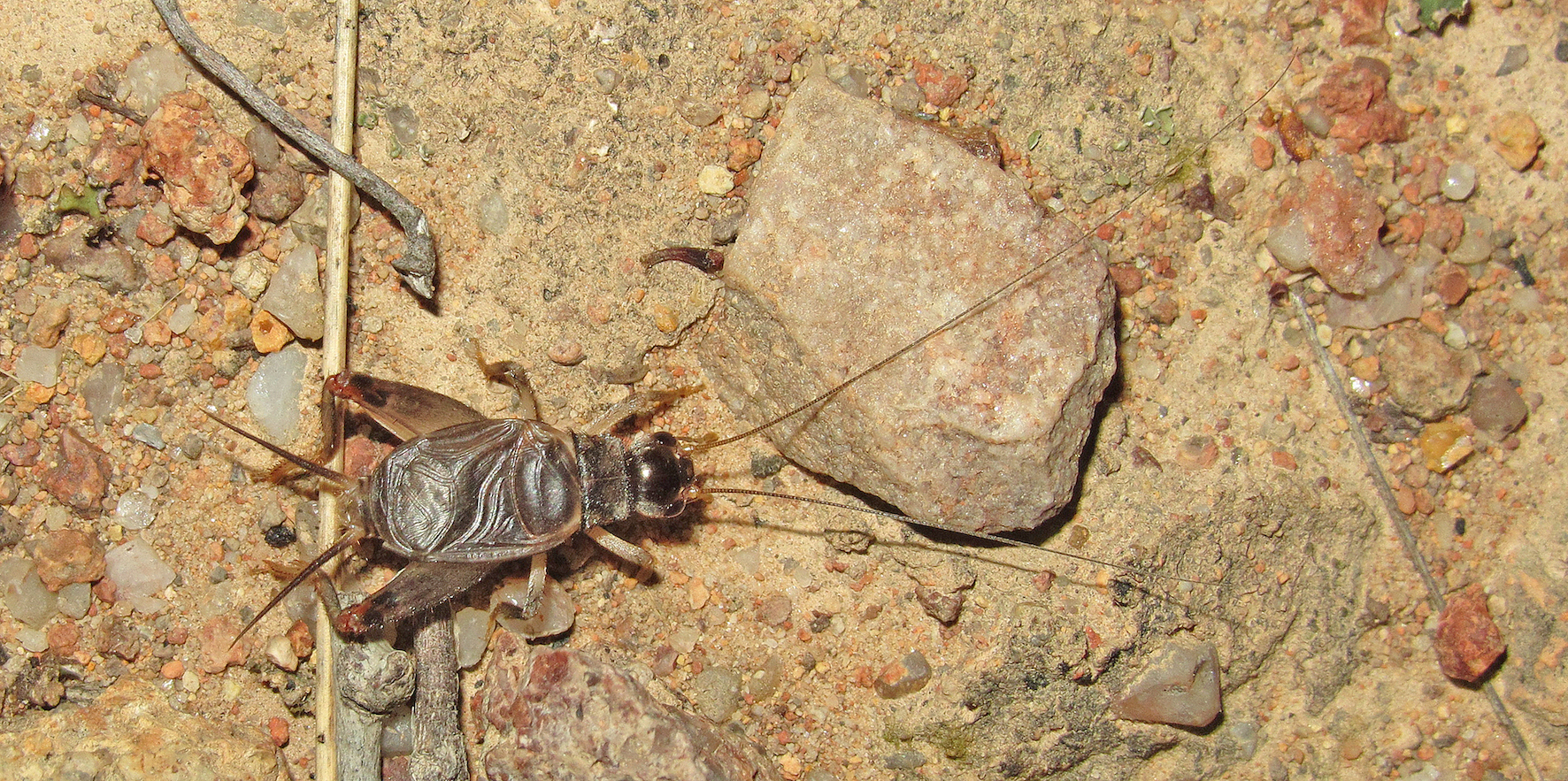 Male Eurygryllodes species, taken with flash, 13 April 2013.
Male Eurygryllodes species, taken with flash, 13 April 2013.
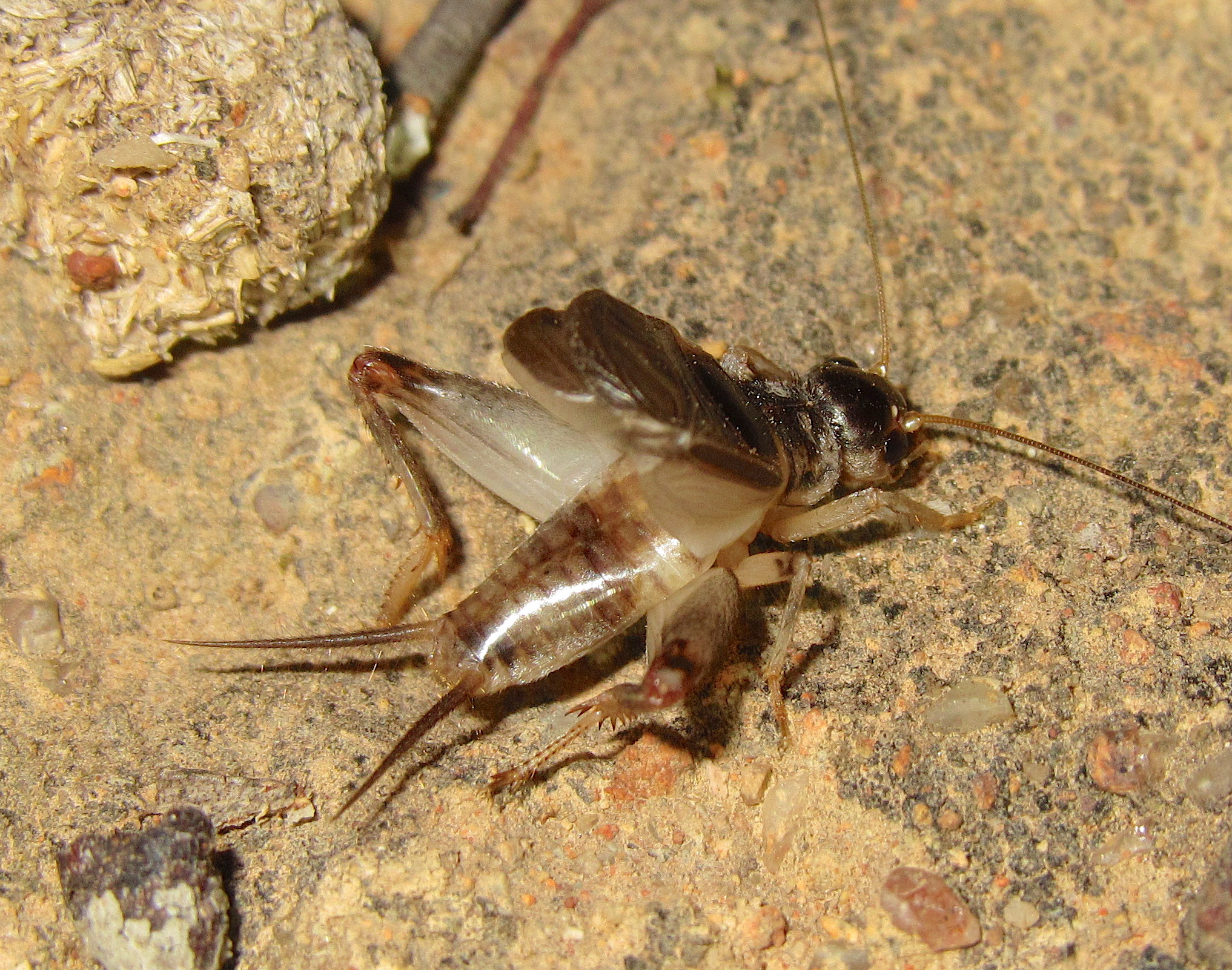 Wings raised, stridulating.
Wings raised, stridulating.
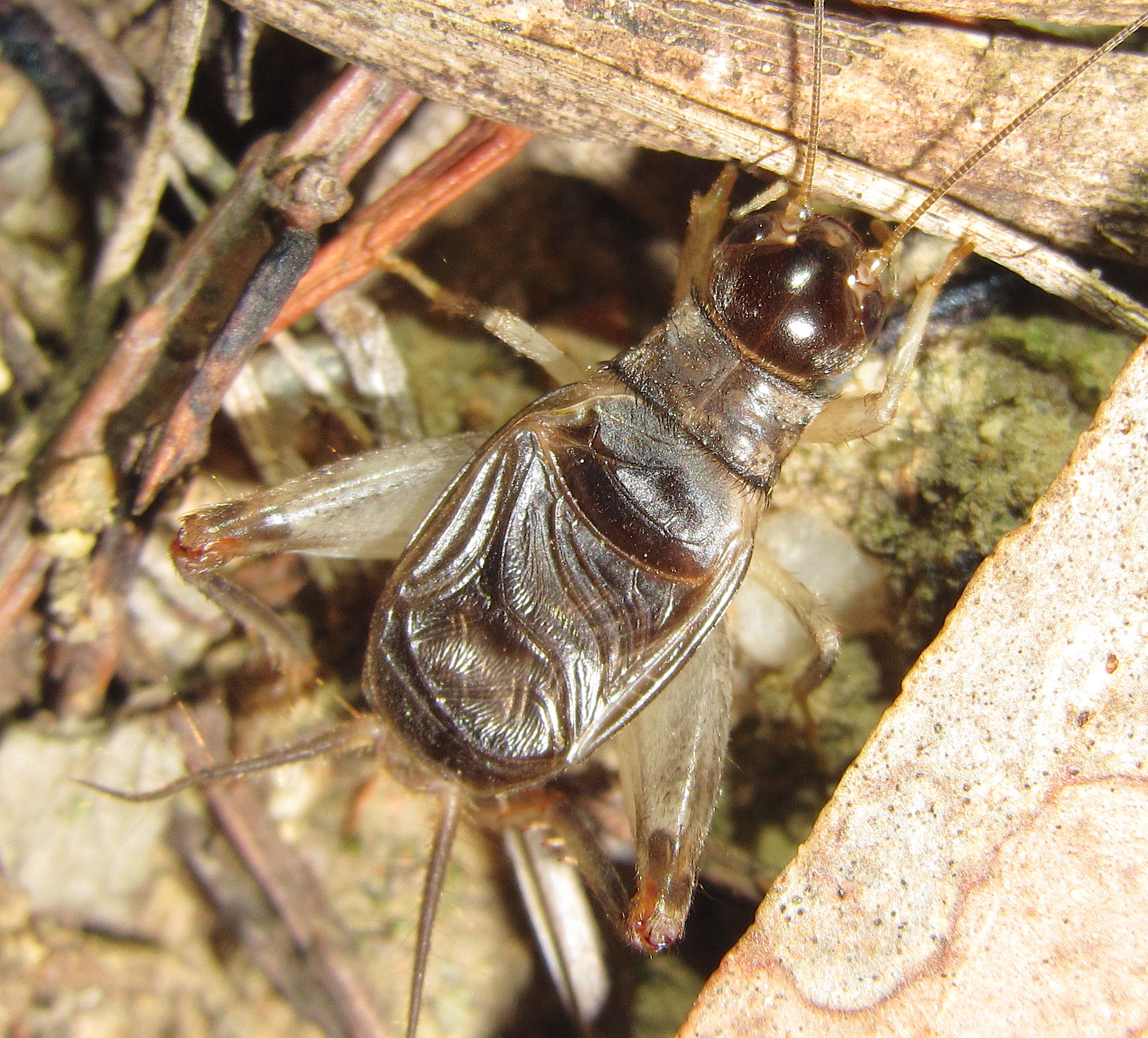 Close-up of the wing pattern.
Close-up of the wing pattern.
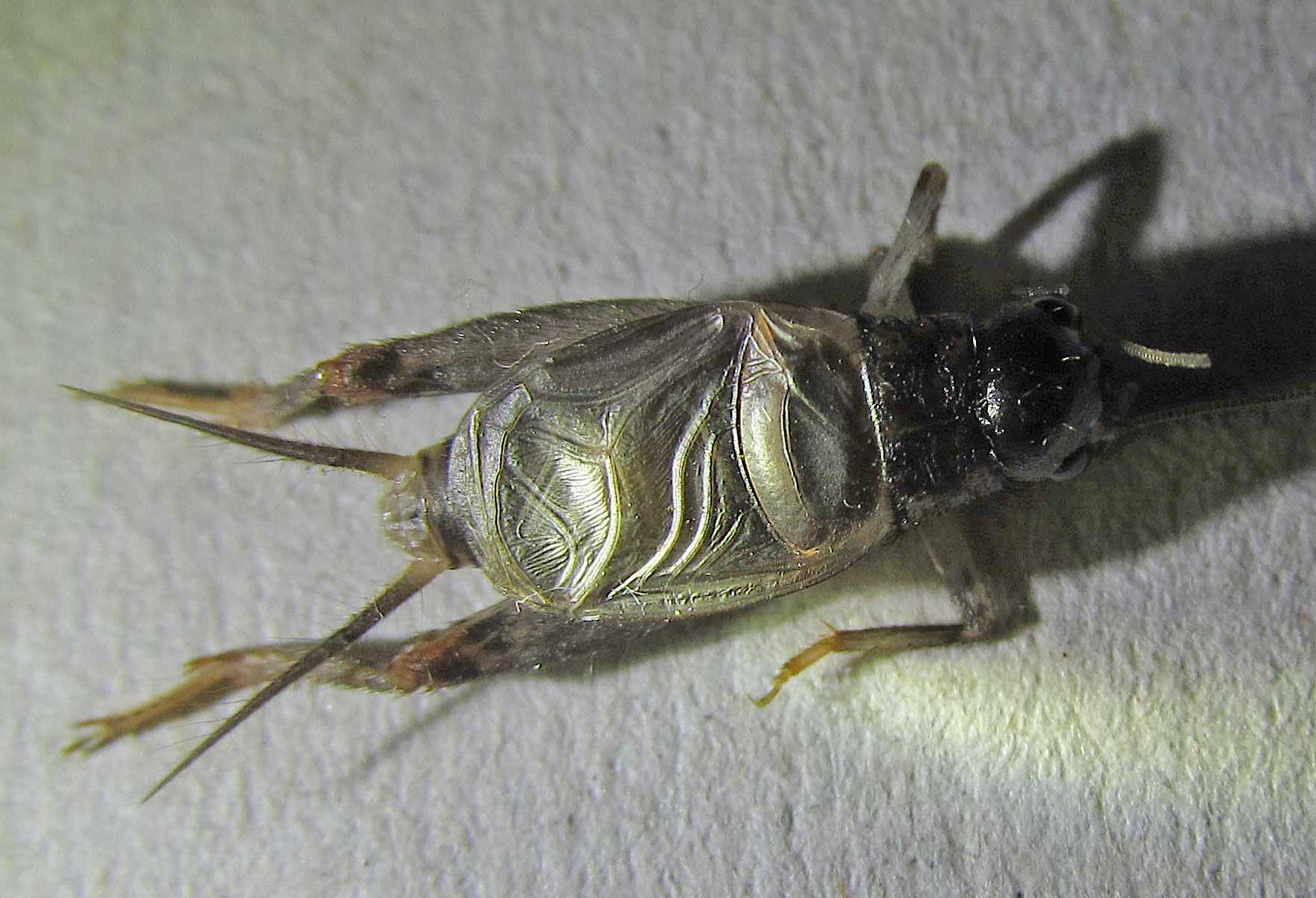 Another view of the wing pattern, this specimen was sent to David Rentz for identification.
Another view of the wing pattern, this specimen was sent to David Rentz for identification.

Sonogram and audio (18 seconds). A regular ‘peep’ at 4.5 kHz, given every 2 seconds.
Recorded 11 April 2009, “Rocklands” property in Capertee Valley, 11 p.m., Olympus LS10, Sennheiser ME66.
Here is the call of the Eurygryllodes cricket played at half speed:
2. possibly Marinna mira – Rinky-dink Cricket
Marinna mira is known only from Cape York in Queensland, which is a very long way from Capertee Valley in NSW. However there are similarities to a sketch and description for this species, from the book The Australian Crickets, Daniel Otte and Richard Alexander (1983). Due to its high pitched distinctive lilting call, I have dubbed this species the Rinky-dink Cricket. It calls by day during autumn, in sparse woodland habitat – staying well hidden in grass tussocks, fallen bark and leaf litter. Although tiny, it has a long and flexible body and white tips to its cerci (tails) which it waves about, presumably as a signalling mechanism.
Typical habitat for this cricket in Capertee Valley, NSW
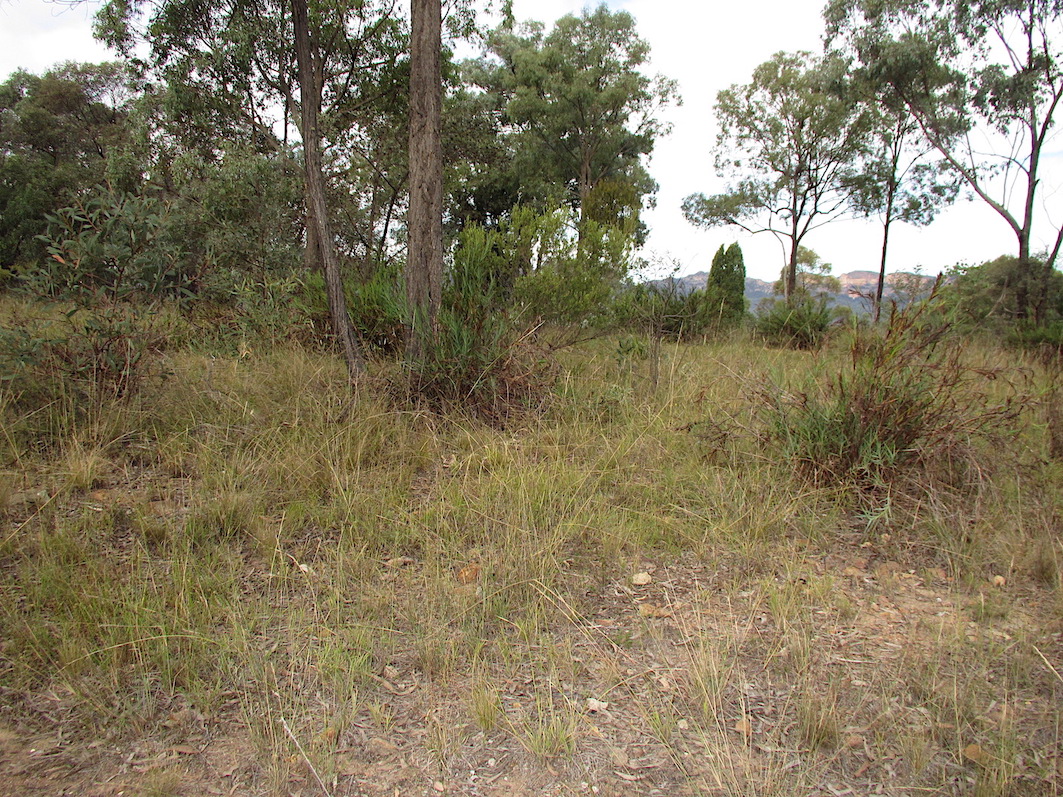
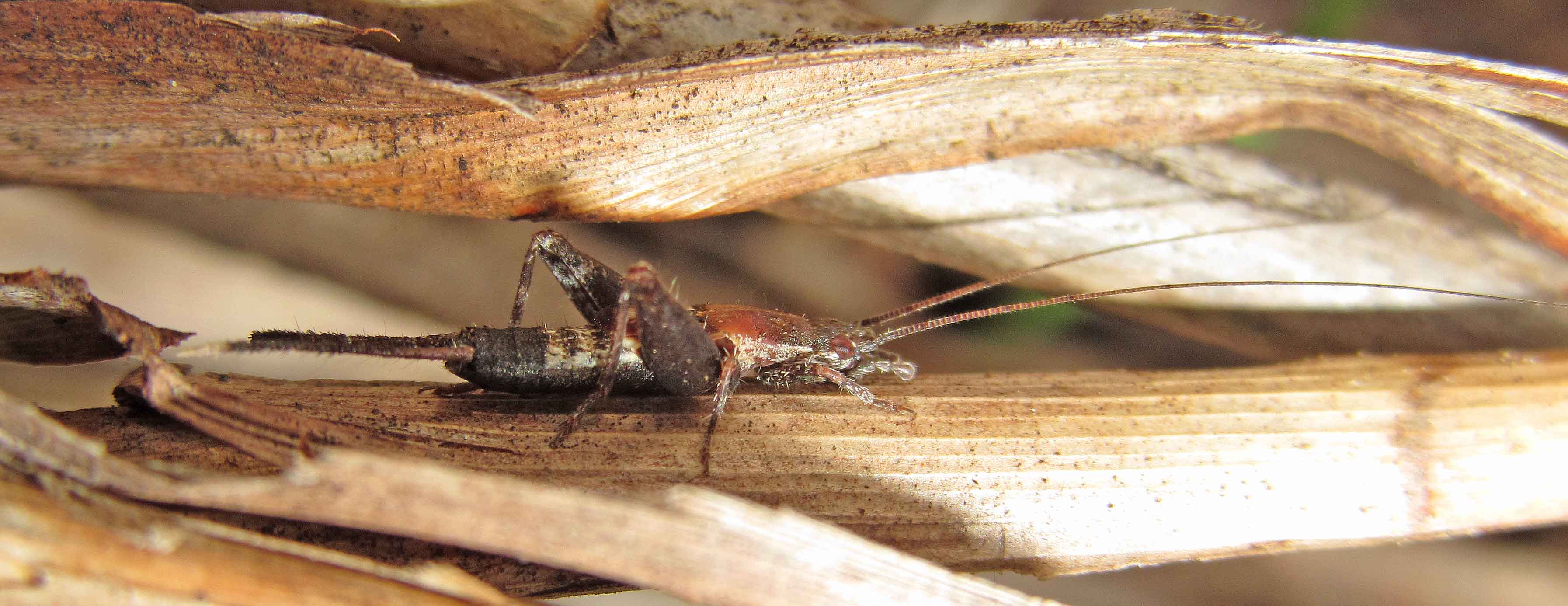
 White-tipped cerci waving about, long agile body, one hind leg missing.
White-tipped cerci waving about, long agile body, one hind leg missing.
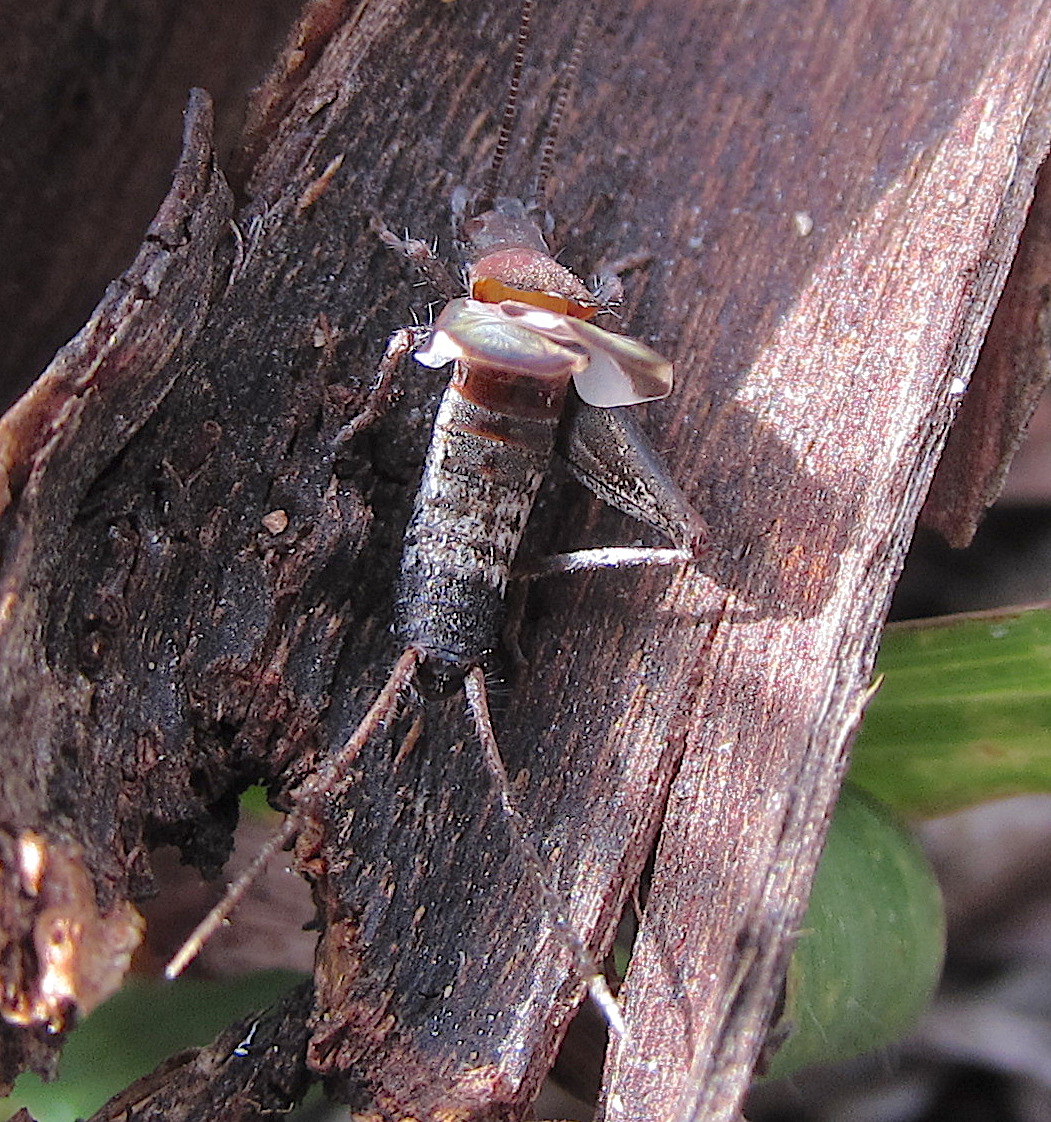 Stridulating with wings raised, one hind leg is missing.
Stridulating with wings raised, one hind leg is missing.
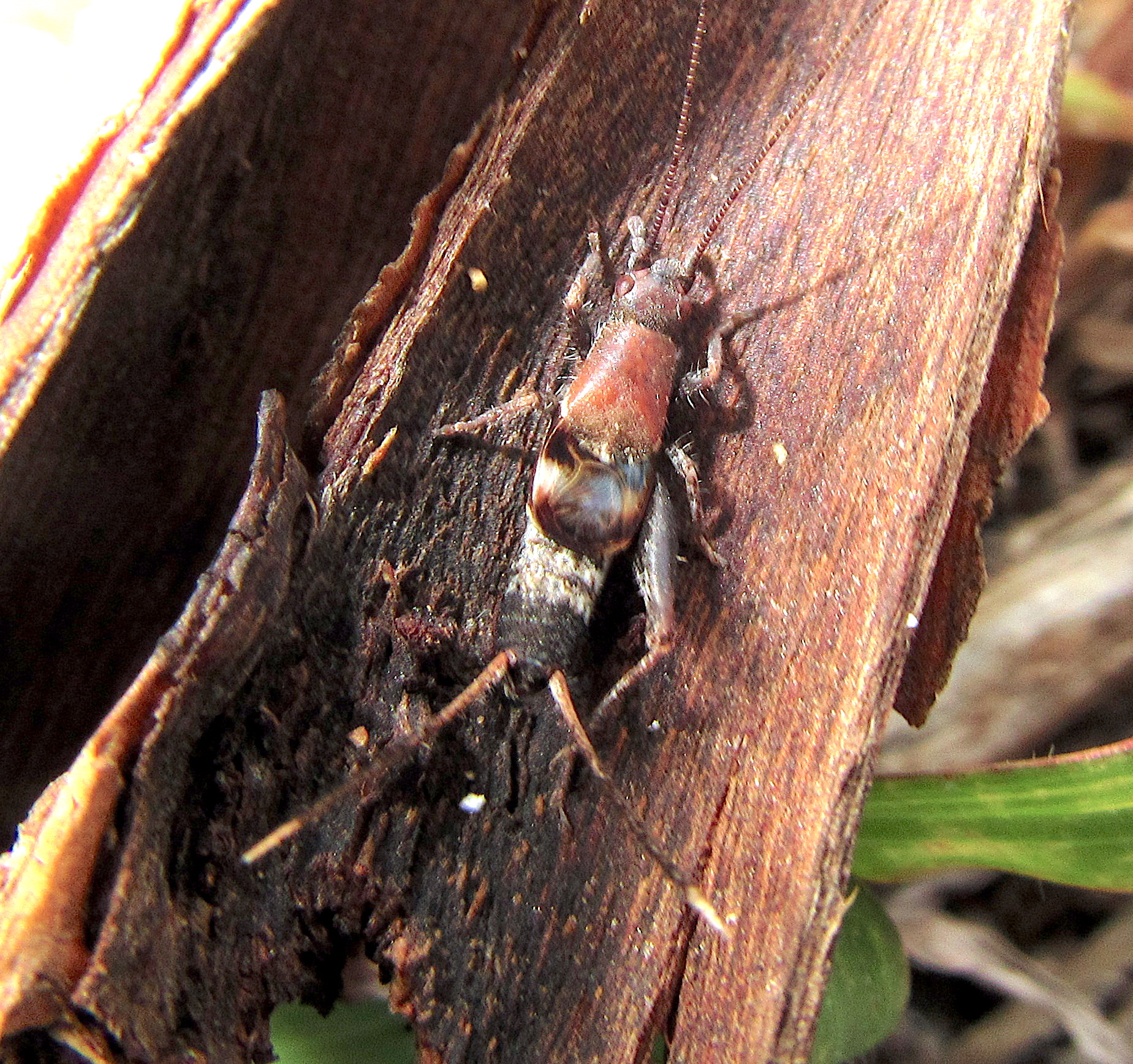 Wings flat, one hind leg is missing.
Wings flat, one hind leg is missing.
Short movie of the Rinky-dink cricket calling, 7 MB Quicktime:
CRICKET – RINKY-DINK low res final 290319
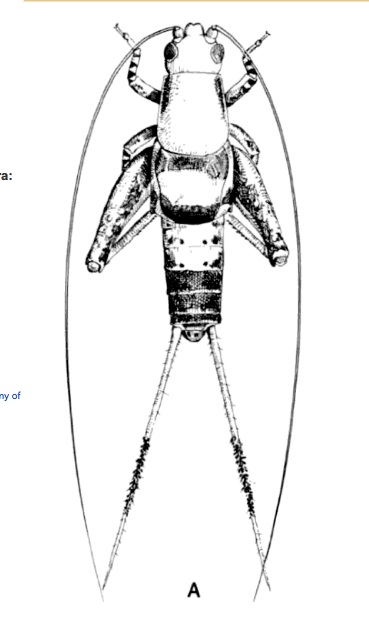
Marinna Mira sketch, page 425 in book Australian Crickets. Is my species in Capertee Valley the same one? The books says this specimen from Cape York has a “call not known”.
Sonogram and audio for my Rinky-dink Cricket from Capertee Valley. Note the high pitch, over 7 kHz.
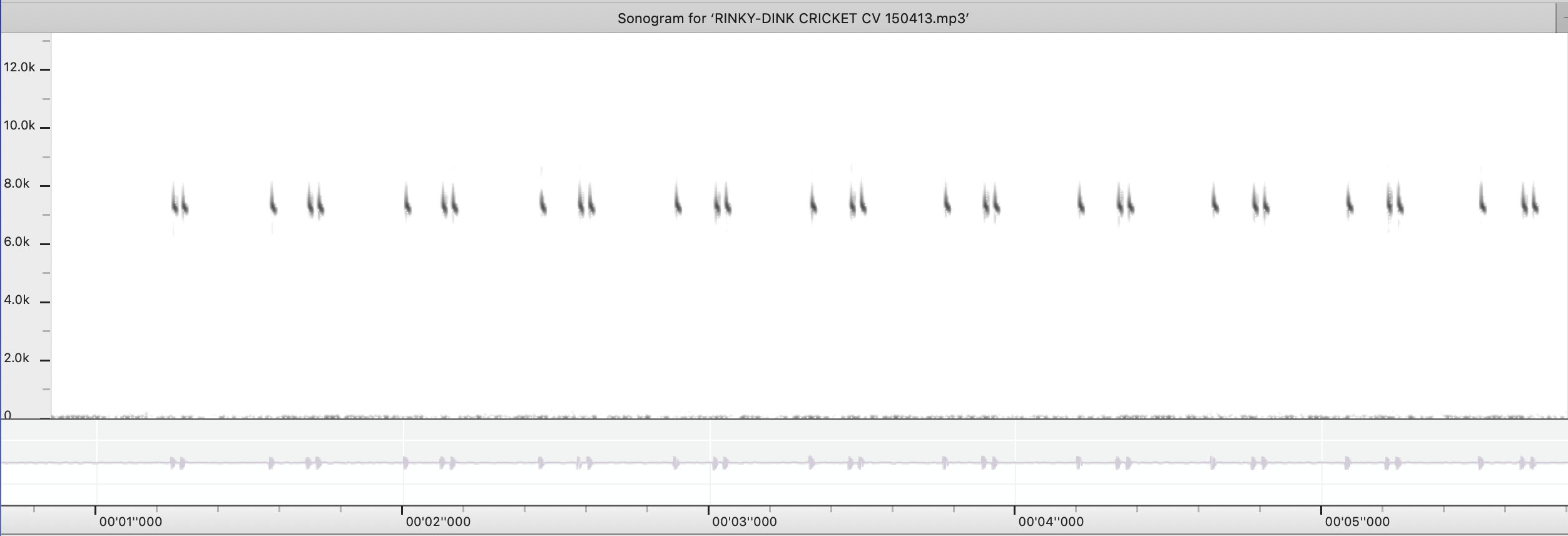
Recorded outdoors in Capertee Valley 15 April 2013 with Olympus LS10 and Sennheiser ME66, 19 degrees C.
Here is the call of the Rinky-dink cricket played at half speed:
All photos on this page taken with a Canon Ixus 1100 pocket camera: Eurygryllodes photos 13 April 2013 and Rinky-dink photos 19-21 April 2013.
